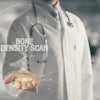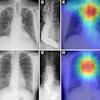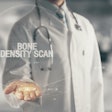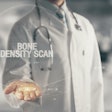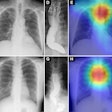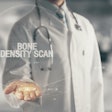VIENNA - Patients who have undergone percutaneous transluminal coronary angioplasty (PTCA) are at risk for restenosis and need to be carefully monitored, according to Dr. Nina Gagarina.
Dr. Gagarina presented the results of PTCA follow-up research conducted at the Cardiology Research Center in Moscow to attendees of the European Congress of Radiology. PTCA is widely used in treatment for coronary artery disease. Dr. Gagarina and her colleagues used electron-beam computed tomography (EBCT) to measure the degree of coronary calcification in patients who had undergone PCTA.
The Moscow researchers selected 72 men and 8 women who had a total of 96 coronary artery stenoses and had undergone balloon angioplasty. Before the interventional procedure was performed, all patients were examined with EBCT and the rate of complications and restenosis were estimated.
The group found that the average coronary calcium score in the segments treated with PTCA was 39.8. Restenosis was detected in 25% of the dilated segments. Among these patients, the average calcium score in the PTCA-treated coronary segments was 74.5. Patients who did not show evidence of restenosis had an average calcium score of 22.9.
By applying receiver operator characteristic (ROC) analysis, the researchers were able to determine both sensitivity and specificity of EBCT for forecasting PTCA and restenosis. The critical calcium score in coronary segments that had undergone PTCA was 27 for restenosis (a sensitivity of 79% and a specificity 62%).
The patients were divided into two groups: those with significant calcium scores in coronary segments (>26) and those with insignificant calcium scores (<26). According to Gagarina, the frequency of complications caused by PTCA as well as the restenosis rate was notably higher in the groups with significant calcification (p<0.05).
Gagarina concluded that the use of EBCT provided the study's most salient finding: that the high calcium score in the coronary artery segments subjected to PTCA is directly associated with an increased risk of restenosis.
She recommended that patients who have undergone PTCA be monitored annually to track restenosis. The research may also be useful in the selection of devices for endovascular therapy, Gagarina said.
By Jonathan S. BatchelorAuntMinnie.com staff writer
March 3, 2001
Click here to post your comments about this story. Please include the headline of the article in your message.
Copyright © 2001 AuntMinnie.com
